Open 7 days
- Mon - Fri 8am-8pm
- Sat 8am-12pm
- Sun 8am-12pm
After hours veterinary care
After hours veterinary care
OCD in the canine stifle may be easily missed. It causes a chronic lameness in the hindlimb of growing dogs. With so many causes of lameness in developing dogs, our focus is often on more common causes and the lesions can be easily missed on radiographs.
The OCD lesion is not that easy to see.
There is erosion of the articular surface of the femoral condyle with some sclerosis around the margins of the lesion.
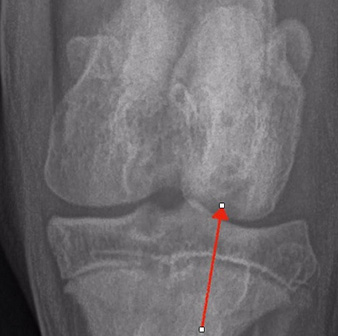
The dog may have a chronic worsening lameness. There is often muscle wasting of the limb and in particular the quadriceps muscles. This can easily be assess by comparing the muscle mass with the opposite limb. This of course is not specific for OCD lesions of the stifle.
Something that is a consistent feature of stifle OCD is a spectacular medial buttress of the stifle in a young dog. The medial buttress develops due to chronic inflammation of the stifle and mimics canine cruciate disease and must be differentiated from CCL disease in the dog. It is unusual for a dog between 6 and 12 months to have such a spectacular medial buttress which must raise the suspcion for an OCD lesion in the stifle.
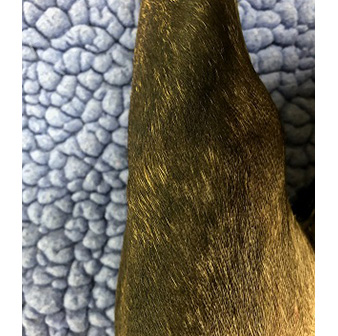
Medial buttress of the canine stifle with an OCD lesion of the femoral condyle.
Notice the spectacular inflammatory changes to this stifle. This dog was only eight months of age. This raises the suspicion for an OCD lesion in a dog so young.
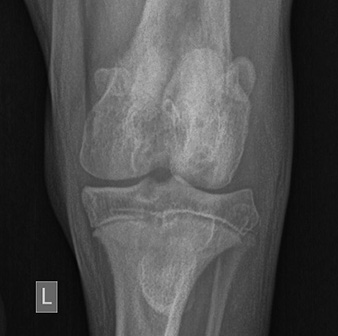
This is the AP view of this stifle
The spectacular erosions and inflammation of the condyle can also be seen in the lateral view.
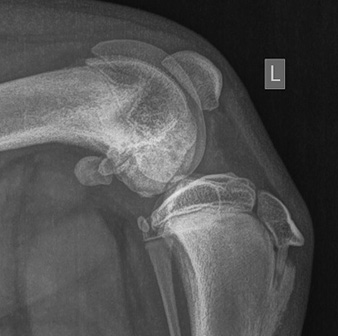
The edge of the femoral condyle is not smoothe and you can see the areas of demineralisation.
The owners of this dog consented to surgery. There are few treatment options for an OCD lesion of this severity.
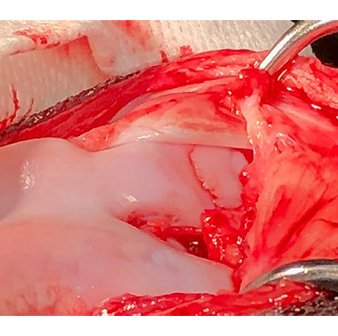
OCD lesion femoral condyle.
The articular cartilage becomes separated from the deeper subchondral bone. I explain it to clients that it is like old paint bubbling and flaking off a wall.
The standard procedure is to remove the diseased flap of cartilage and curette back to healthy bleeding bone. You can put very small drill holes through the lesion into the bone cavity to allow progenitor cells into the lesion to promote healing.
In very large lesions however, this may not be enough.
In the case above, this is a very large lesion in a very bad location.
Treatment options are limited if standard OCD debridement does not work.
Cancellous graft won’t stay in the lesion due to gravity, movement and the obvious open ended cavity into the joint..
There is a procedure called OATS where a cylindrical core of cartilage and bone is taken from the lateral edge of the condyle and fitted into the space. It sounds good but results have actually been less impressive than originally expected.
This has lead to a move toward synthetic plugs.
SynACART has developed a synthetic plug system that stimulates remodelling and regrowth of bone. The jury is still out on the success of this technique although some specialists are reporting good results.
Could bioglass be a cheaper alternative that essentially does the same thing? This is experimental with no supporting data in canine surgery. Bioglass is used in many human maxillofacial surgeries for reconstructive bone surgery or non healing fractures.
If healing does not occur causing severe ongoing chronic pain, total knee replacement or amputation may be the only alternative.
The only alternative to surgery would be an orthotic brace.
Looking For Vet Care Go: Vet Australind
Social distancing is easy for pets and people in our spacious waiting areas.



